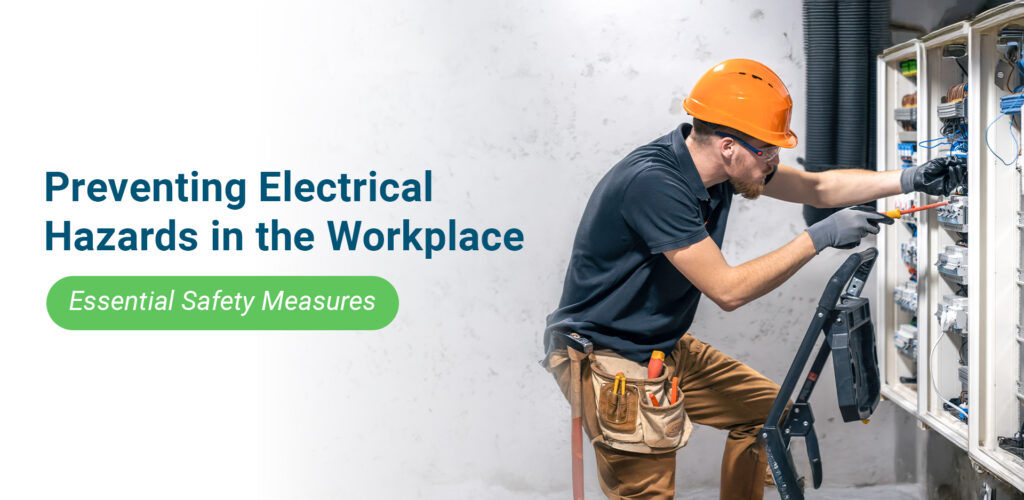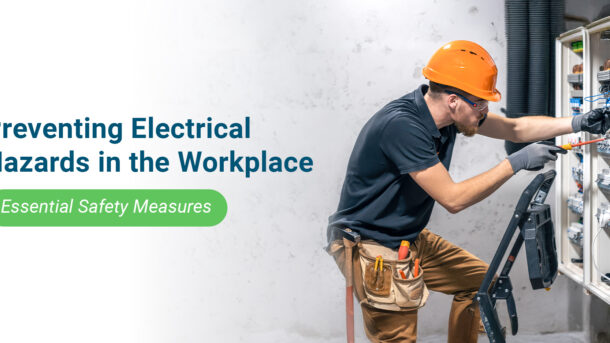
Electrical safety in the workplace is more than just compliance—it’s a fundamental duty to protect lives and maintain operations. Industrial environments, with high-voltage equipment and complex electrical systems, are particularly vulnerable to accidents.
Each year, electrical hazards cause over 4,000 workplace injuries, with financial losses from a single incident often exceeding $500,000. Beyond monetary costs, electrical accidents can lead to severe injuries, including heart complications, disfigurement, and neurological damage. Poor safety measures can also disrupt operations, damage equipment, and result in legal liabilities.
This guide explores key electrical hazards, safety measures, and best practices to foster a safety-first workplace culture.
Understanding Electrical Hazards in the Workplace
Electrical hazards pose severe risks, including injuries, fires, and fatalities. Common causes include:
- Exposed Wires – Damaged wiring increases shock and fire risks.
- Faulty Equipment – Poorly maintained machinery leads to electrical failures.
- Improper Installation – Incorrect wiring or grounding creates system vulnerabilities.
- Overloaded Circuits – Excessive power demand causes overheating.
- Human Error – Lack of training or negligence in following safety protocols.
Industrial settings face higher risks due to high-voltage operations, environmental factors (humidity, dust), and complex machinery.
Essential Electrical Safety Measures
- Conduct Regular Safety Audits
- Thermal imaging to detect overheating.
- Risk assessments for wiring, grounding, and safety devices.
- Action plans for corrective measures.
- Train Employees on Electrical Safety
- Arc flash awareness (temperatures can reach 19,000°C).
- Proper PPE usage (insulated gloves, dielectric boots).
- First aid & emergency response training.
- Enforce Lockout/Tagout (LOTO) Procedures
- Isolate power sources before maintenance.
- Use color-coded tags for clear warnings.
- Ensure only certified workers perform LOTO tasks.
- Invest in Advanced Circuit Protection
- GFCIs & AFCIs to prevent shocks and fires.
- Surge protectors to safeguard sensitive equipment.
- Maintain Equipment Regularly
- Inspect wiring for damage.
- Test insulation resistance.
- Clean electrical panels to prevent overheating.
- Use Industrial-Grade Equipment
- Ensure compliance with IEC/IS standards.
- Select durable, high-load-rated components.
- Implement Emergency Response Plans
- Identify high-risk zones.
- Install Class C fire extinguishers.
- Conduct regular safety drills.
The Role of Technology in Electrical Safety
- IoT Sensors – Monitor voltage, temperature, and humidity in real time.
- AI Risk Assessment – Predict hazards using historical data.
- Remote Monitoring – Centralized dashboards for quick response.
These innovations enhance predictive maintenance and hazard prevention.
Benefits of Prioritizing Electrical Safety
(1)Reduced Injuries & Fatalities – Fewer accidents mean a safer workforce.
(2)Minimized Downtime – Preventive measures ensure uninterrupted operations.
(3) Regulatory Compliance – Avoid fines and legal issues.
(4) Improved Productivity – A safe workplace boosts efficiency.
Overcoming Electrical Safety Challenges
- Lack of Training → Implement regular safety programs.
- Aging Infrastructure → Upgrade wiring and equipment.
- Budget Constraints → Prioritize cost-effective solutions like PPE and audits.
- Complex Regulations → Consult experts for compliance guidance.
Fostering a Safety-First Culture
- Leadership Commitment – Managers must lead by example.
- Open Communication – Encourage hazard reporting.
- Continuous Improvement – Regularly update safety protocols.
By embedding electrical safety into daily operations, businesses protect employees, enhance efficiency, and ensure compliance.
Final Thought:
A proactive approach to workplace electrical safety prevents accidents, saves costs, and sustains long-term operational success.


